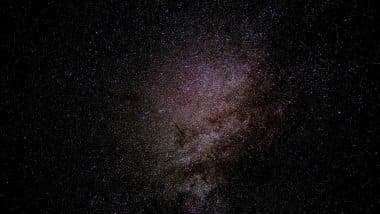The entire universe is composed of so many different elements. There are numerous stars, planets and objects in the vast space that one can fathom. And there is always some intrigue about how our entire universe and life on earth came to be. Now, a cluster of massive ‘celestial monster stars’ has become a subject of study for scientists. The James Webb Space Telescope has discovered the first evidence that millions of supermassive stars could be clues to the formation of our universe. What are these monster stars? Let’s find out. NASA’s James Webb Space Telescope Finds Water Vapour on Faraway Planet.
As reported in Live Science, these massive celestial stars are the largest stars that have been observed anywhere yet. They have a mass weight of almost 5,000 to 10,000 times the sun. As per researchers, these giant stars emerged 440 million years after the Big Bang. European researchers published their findings on May 5 in the journal Astronomy and Astrophysics. “The stars could shed light on how our universe was first seeded with heavy elements,” the study mentions. NASA James Webb Space Telescope Uncovers Mystery, Finds Water Around a Comet in Main Asteroid Belt for the First Time.
The James Webb Space Telescope is a telescope in space that finds evidence tracing the beginning of the universe. It discovered the evidence of these supermassive stars. These stars were seen in unusual clusters, like a group of tightly packed stars. They are believed to have burned out in the early stage of the universe. “Globular clusters are between 10 and 13 billion years old, whereas the maximum lifespan of superstars is two million years. They, therefore, disappeared very early from the clusters that are currently observable. Only indirect traces remain,'' Mark Gieles, the co-author and ICREA professor at the University of Barcelona, states.
Finding these stars is a bit complex. These fiery stars burned roughly at temperatures of 75 million degrees. The bigger, brighter and hotter stars die out first, so these monstrous stars could have burned in extremely violent explosions. What is also interesting is that some of the stars in these clusters have wildly different proportions of elements such as oxygen, nitrogen, sodium and aluminium despite forming roughly the same time and from the same gas and dust clouds 13.4 billion years ago.
(The above story first appeared on LatestLY on May 23, 2023 03:51 PM IST. For more news and updates on politics, world, sports, entertainment and lifestyle, log on to our website latestly.com).













 Quickly
Quickly




















